How weird and quirky period features can be incorporated into modern living
From priest holes to gargoyles, Nicola Venning explores how unusual period features, if well curated, can be the making of a property.

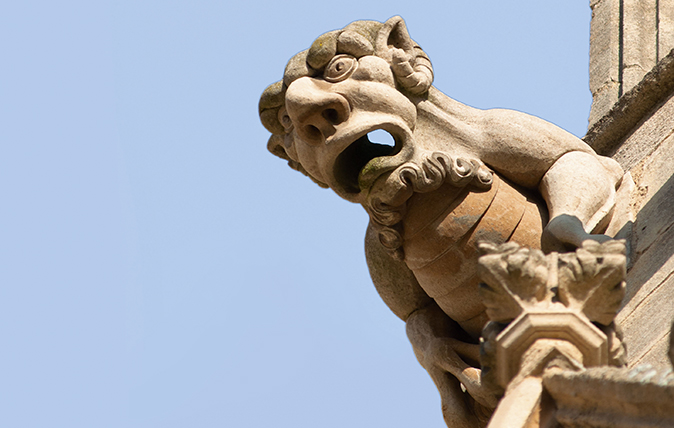
The knotty, beamed ceilings, flagstone floors and crooked staircases of a rambling period home can be both characterful and attractive, but how do you rub along with the more unusual aspects of period charm? Priest holes, over-large fireplaces and even chapels may be colourful, but they can be hard to incorporate into day-to-day living.
‘If handled correctly, the strangest of features can be beautifully adapted,’ explains Richard Freshwater, director at Cheffins estate agency in Cambridge. He cites examples such as ‘murals that have been carefully preserved and used as part of the whole interior-design scheme’ and ‘large inglenook fireplaces used as seating areas in what would otherwise be dead space’.
Priest holes crop up surprisingly often and many owners struggle to use them effectively – after all, they were meant to remain hidden, but they do tell an interesting story. Mr Freshwater has seen them successfully turned into areas for wine storage and used as a discreet home for a safe.
The priest hole in The Chestnuts, a Grade II-listed home in Warboys, near Huntingdon, Cambridgeshire, which dates back to 1666, was enlarged to form a second staircase. It now provides convenient access from the master bedroom to the attic above. The seven-bedroom house was on the market earlier this year.
Other older features that have been adapted to contemporary living include a bear pit in a garden in Somerset that was reimagined as a grotto or cavern for parties.
As a Regency folly, Grade II*-listed Cricket Court, near Ilminster, also has some spectacular interior features, including arched doorways, curving walls, domed skylights, elaborate plasterwork and Juliet balconies.
It’s the home of British fashion designer Alice Temperley and, with eight bedrooms and 5½ acres, it’s on the market with Savills at £2 million.
Exquisite houses, the beauty of Nature, and how to get the most from your life, straight to your inbox.
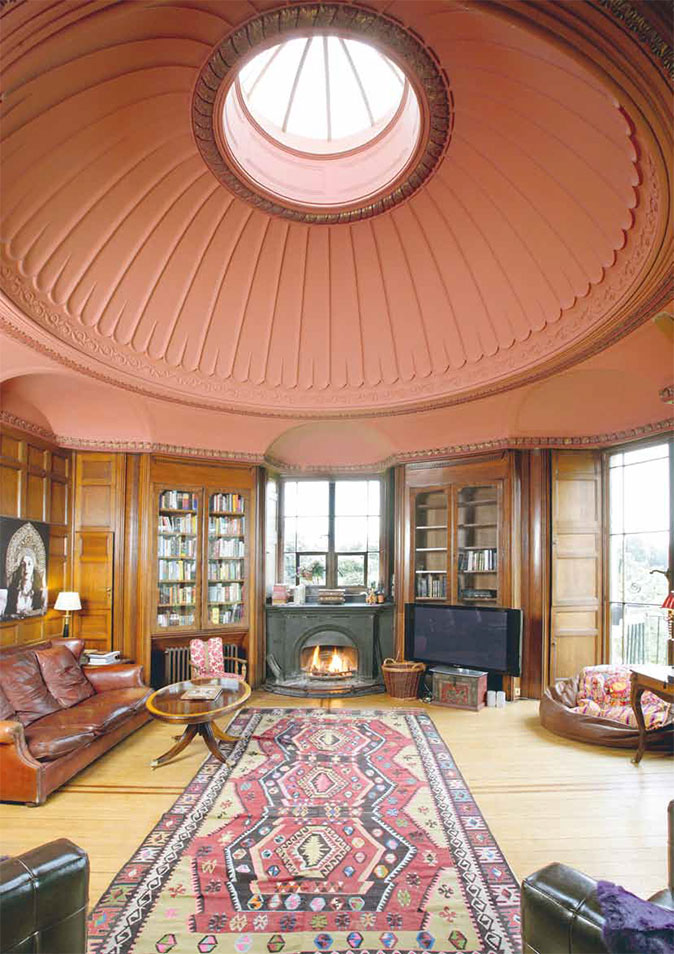
More common oddities across the UK include indoor wells that have been covered and used as kitchen tables and chapels turned into spacious billiard rooms or casual dining rooms (particularly useful after muddy shoots). In fact, adapting an entire room isn’t unusual. The redevelopment of the turn-of-the-century Westfield College campus in north London, now called Hampstead Manor, has breathed new life into the Grade II-listed galleried reading room, now a reception/kitchen room with wood-panelled walls and polished parquet flooring, as well as mezzanine bookshelves and a walkway.
The building’s scholarly features create an exceptional area within the four-bedroom home. Named Skeel Library after the original, it’s on the market for £7.95 million and is part of 125 one- to four-bedroom properties within Hampstead Manor (www.hampsteadmanor.com). Prices start from £747,500 and the first homes will be ready later this year.
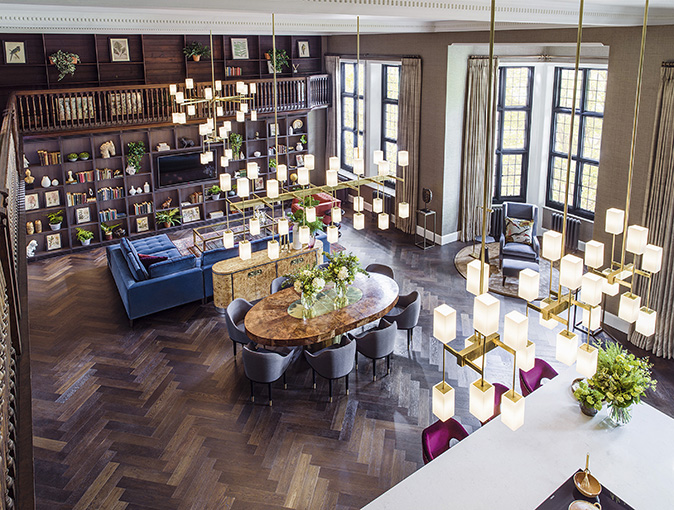
Adapting historic features is easiest when an entire building is being redeveloped, such as at St Thomas, a converted church in Winchester. A two-bedroom apartment (one of nine within the building) makes the most of the building’s height and, in so doing, incorporates soaring Gothic stone columns, arches and vaulted ceilings.
Memorial plaques, carvings and even gargoyles and grotesques have been retained. ‘It’s just wonderful and there’s no way you can replicate that,’ says Chris Gooch, partner with Carter Jonas, with whom the flat is on the market at £850,000.

Of course, not everything can be adapted successfully. A sweeping staircase that once had airy stairwells on the first or second floors, allowing light into a hallway, is likely to be filled in to create features such as bathrooms – wholly necessary, although they may ‘detract from the feel of the house,’ comments Gideon Sumption, director of Stacks Property Finders in Devon and Somerset.
The main value in adapting period features into the modern fabric of a home is not so much in their tangible worth as their curiosity value. Something that raises a buyer’s interest, says Mr Sumption, ‘encourages them to emotionally connect to a property’ – valuable, indeed.
Keeping the character
- Don’t destroy something you don’t like the look of – even a gargoyle, in the right context, can increase your property’s desirability
- Try not to tamper with a feature’s original form. Its charm is in its age and uniqueness, especially when there’s a story to be told
- If your home is a listed building, you’ll need to work closely with a conservation officer and architect to ensure the original fabric is improved upon and not damaged. Even if it isn’t listed, it’s always best to proceed with caution
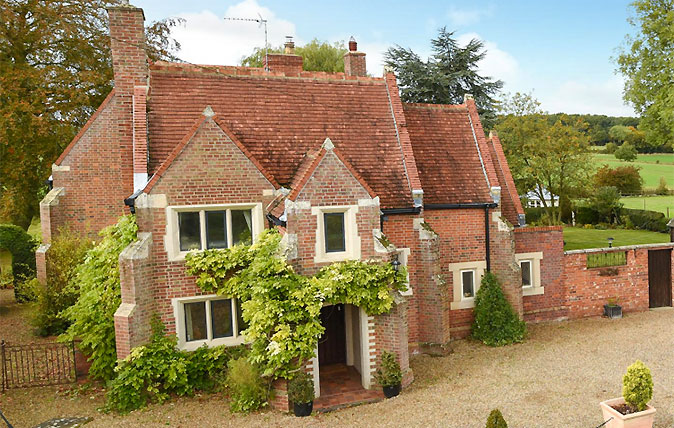
Credit: Jackson-Stopps & Staff
A Tudor-style house with character and land, within easy reach of the city
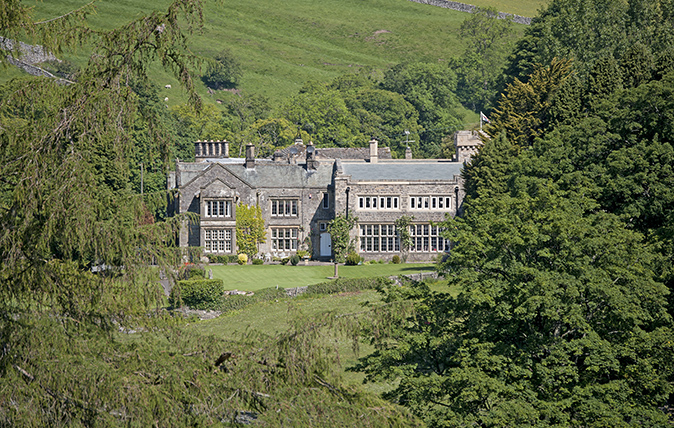
A historic home ‘of strong and solid character’ in the heart of the Yorkshire Dales
Eight bedroom Hanlith Hall is set in 64 acres of splendid gardens, parkland and woodland.
Country Life is unlike any other magazine: the only glossy weekly on the newsstand and the only magazine that has been guest-edited by His Majesty The King not once, but twice. It is a celebration of modern rural life and all its diverse joys and pleasures — that was first published in Queen Victoria's Diamond Jubilee year. Our eclectic mixture of witty and informative content — from the most up-to-date property news and commentary and a coveted glimpse inside some of the UK's best houses and gardens, to gardening, the arts and interior design, written by experts in their field — still cannot be found in print or online, anywhere else.

